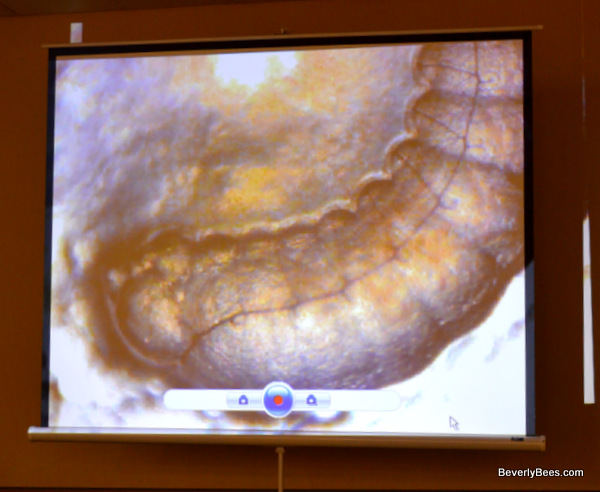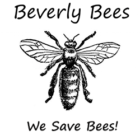Field Day, Virgin Queens And More At The Treatment Free Beekeeping Conference
Field Day at the Treatment Free Beekeeping Conference was really fun. Dean Stiglitz gave a talk on queen rearing and we even got to graft some queens, Sam Comfort taught people how to make a skep, Dr. Paul Arnold showed us how to analyze pollen grains in honey, Laurie Herboldsheimer showed everyone how to make sauerkraut and more. Dean and Laurie also put bee bread and a newly hatched bee larvae under a microscope slide and projected it onto a big screen so everyone could see what it looked like. The larvae was an amazing eating machine. You could see it eating and watch it pulse as it breathed. I wish I had taken a video of it!

Dean Stiglitz raises virgin queens for sale. Not many people are doing this and Dean has discovered a few tricks to do it right. Bees don’t pay attention to virgins and won’t take care of them or release them from a cage they way they do a mated queen. In order to get caged virgins fed you need to place them in between frames of open brood. Then the nurse bees will take care of them while they are tending to the larvae.

Dean grafts the queens using a grafting frame he made. When the cells are capped and the queens are about to hatch and at a safe stage for moving (queens in the cell are very delicate and there is a short window between when they can be safely transported and when they hatch). Dean puts them into a reptile incubator kept at 94 degrees. He takes the cell off the grafting bar and puts the end into a queen cage and the queen hatches directly into the cage. Occasionally they will also pipe in there which I got to hear for the first time – very fun!

After they hatch, Dean inspects them for defects by letting them walk on his hand because the most common defect in grafted queens is to the front legs. A gimpy queen can be observed by the way the queen walks. Dean will place the queens into a nuc for up to a week so the bees can take care of them and feed them while the virgins are waiting to be installed in their final home. While they are in the incubator Dean feeds them honey by putting a few drops on the cage screen. I will be writing another post about Dean and his queen rearing techniques and talks within the next week.
Later that day, Dr. Paul Arnold gave a fascinating talk about how to identify pollen grains in honey. He does it for a fee and there are very few others in the country who are experts in Melissopalynology or the study of pollen in honey and it’s source. In order to identify the pollen grains you need raw honey as unfiltered as possible. Then you put some drops in a centrifuge tube mixed with water and spin it for about a half hour or more until a ball of pollen forms in the bottom. Then you can take this pollen and view it under a microscope. The problem with trying to identify pollen grains are that most of them look very similar to each other and are hard to tell apart unless you have a high magnification microscope such as a scanning electron microscope. Paul uses a regular microscope so he can only go so far in identifying some of the pollen grains. For instance it may be hard to tell the difference between a pollen grain from a lemon flower or an orange flower but he could tell if it is pollen from a citrus flower. There are a few references on the web for pollen images. Two of them include the USDA pollen image database and the University of Arizona. If you love looking in a microscope there are vast opening in this field for this type of work.
During field day Sam Comfort did a skep making workshop. He grew the grass himself for the workshop and after the participants weaved it together it looked similar to the picture below. The last step is to coat it with mud to make it waterproof. Skeps are illegal in most of America because they do not have moveable frames. So of course these skeps were for display only. After Sam’s skep was made he put it on display, sunglasses, pipe and all!

Here are a few more pictures from the conference. Click on a picture to open the gallery and click on the arrows to scroll through the photos. If you click on the picture the gallery will close. Enjoy!!
Other Posts You May Enjoy:
- Microbes & Bees Plus How To Light A Smoker & Other Hive Inspection Tips
- Top Bar Hive Honey Harvest With Sam Comfort
- Making A Package Of Bees From A Top Bar Hive With Sam Comfort
- Treatment Free Beekeeping Conference Plus “What Bees Need”
- Michael Bush At The Treatment Free Beekeeper’s Conference












